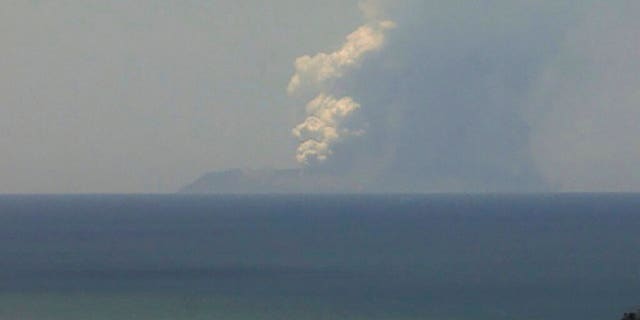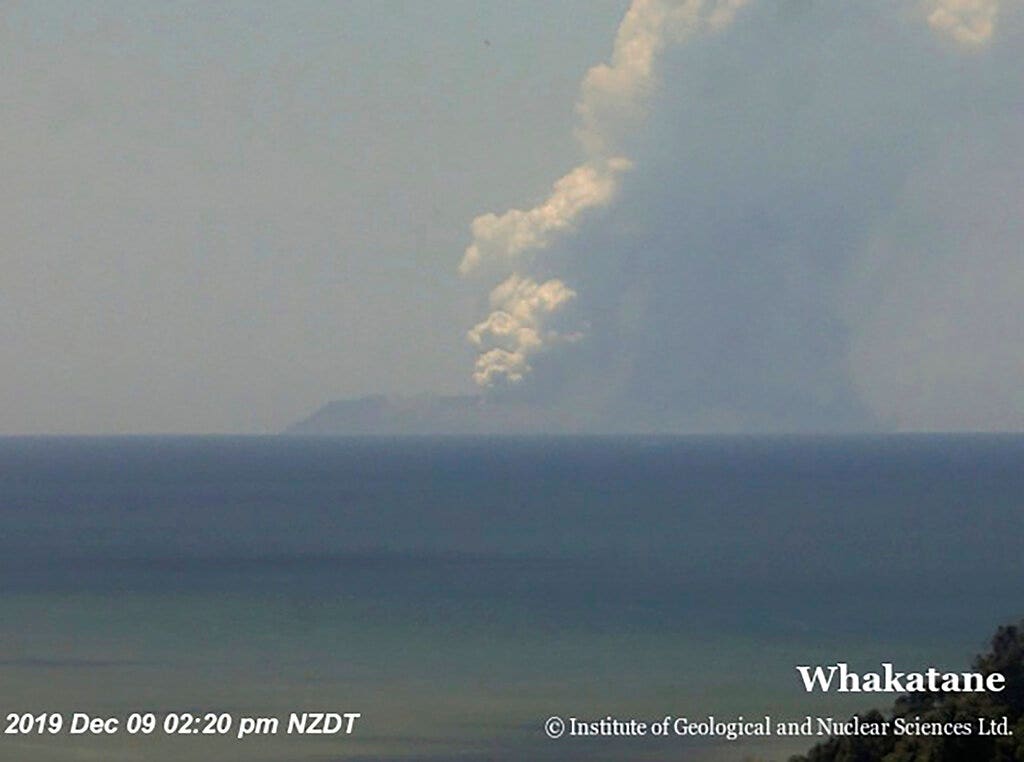WELLINGTON, New Zealand (AP) -- A volcano on a small New Zealand island frequented by tourists erupted Monday, and a number of people were missing and injured after the blast.
Prime Minister Jacinda Ardern said about 100 tourists were on or near White Island when it erupted in the afternoon.
"Some of those, at this stage, are unaccounted for," she said. '"A number of people are reportedly injured and are being transported to shore."

This image released by GNS Science, shows plumes of smoke from a volcanic eruption on White Island, seen from Whakatane, New Zealand Monday, Dec. 9, 2019. (GNS Science via AP)
She said the incident appeared to be "very significant."
"All our thoughts are with those affected," she said.
Ardern said there were no confirmed fatalities.
St John medical responders said in a statement they believed there were 20 people on the island who were injured and in need of medical treatment. It said it had dispatched seven helicopters to the island with paramedics aboard.
Brad Scott, a volcanologist with GNS Science, said the eruption was significant and had sent a plume of steam and ash about 12,000 feet into the air. He said it had also affected the whole of the White Island crater floor.
The GeoNet agency at first raised its alert level to four, on a scale where five represents a major eruption. It later dropped the alert level back down to three. Scott said that was because the eruption wasn't sustained beyond the initial blast.
White Island sits about 30 miles offshore from mainland New Zealand. There will be questions asked as to why tourists were still able to visit the island after scientists recently noted an uptick in volcanic activity.
GeoNet raised the alert level on White Island from one to two on Nov. 18, noting an increase in the amount of sulfur dioxide gas, which originates from magma deep in the volcano. It also said at the time that over the previous weeks, the volcanic tremor had increased from weak to moderate strength.
Scott said the alert level was often raised and then later dropped again without any eruption. He said there hadn't been any major incidents with tourists visiting the island in the past, although there had been some close calls.
Scott said it was not for him to say whether the island was safe enough to host tourists immediately before Monday's eruption. White Island is northeast of the town of Tauranga on North Island, one of New Zealand's two main islands. Police were asking people to avoid areas on the North Island that were close to the eruption, including the Whakatane Heads and Muriwai Drive areas.
GeoNet said it is New Zealand's most active cone volcano and about 70% of the volcano is under the sea.
Twelve people were killed on the island in 1914 when it was being mined for sulfur. Part of a crater wall collapsed and a landslide destroyed the miners' village and the mine itself.
The remains of buildings from another mining enterprise in the 1920s are now a tourist attraction, according to GeoNet.
The island became a private scenic reserve in 1953, and daily tours allow more than 10,000 people to visit the volcano every year.
The island is also known by the indigenous Maori name Whakaari.
